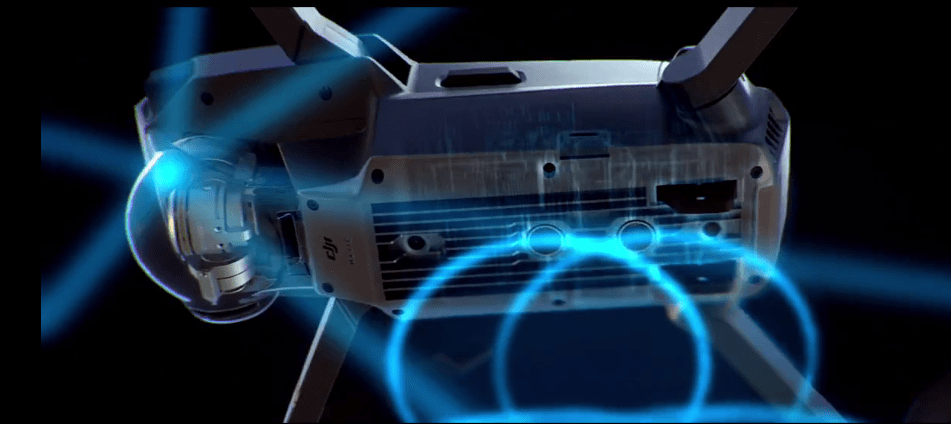Yesterday’s Mavic Pro announcement from DJI is significant for a number of reasons. Strategically it is clear DJI is not about to cede market share from companies seeking to compete on either price or technology. The pricing is competitive with the recently announced GoPro Karma; but most importantly perhaps, is a the inclusion of a feature that is a true technology differentiator. The Mavic Pro is the only drone with a sub $1000 price tag that comes with sense and avoid technology. The Mavic integrates the Myriad 2 visual processing unit (VPU) from Movidius. The Myriad 2 essentially gives the Movic Pro its eyes. Movidius technology is also present in the Phantom 4 from DJI.
Myriad 2 VPU is a processor designed specifically drones. Using the newest version of Myriad 2 DJI is able produce drones that sense and avoid obstacles in front of their path, hover in a static position without the need for GPS, and automatically follow subjects through advanced machine learning algorithms. With the Mavic Pro, DJI has utilized the latest version of the Myrad 2, the MA2155 processor, to deliver vision-based capabilities such as the ability to understand gesture commands, and an ultra-accurate landing system that combines optical tracking and GPS in order to be able to land within a single inch of the original takeoff position. DJI has also upgraded its Active Track (“follow me”) by adding three new functions.
Movidius CEO, Remi El-Ouazzane commented on the commented on the new device, saying,
It is tremendously encouraging to see DJI rate of innovation in their products, which signals how much opportunity lies ahead in the drone space. After the Phantom 4 debuted the first ever consumer-grade flight autonomy system powered by Myriad 2, it set the standard for flight features to this day. We are delighted that DJI is rolling out Myriad 2-based visual intelligence in even more advanced implementations. It reaffirms and energizes us in our philosophy of bringing on-device artificial intelligence and machine vision technology to all sorts of consumer devices.
DJI has dubbed this sense and avoid vision technology feature “FlightAutonomy.” No matter what it’s called, it represents a significant step in the slow but steady march toward having drones that can be operated more safely and responsibly.
One of the more interesting dimensions of this announcement is Intel’s role. Intel’s Real Sense technology provides the Yuneec Typhoon H with sense and avoid functionality. Intel recently acquired Movidius. They own the technology providing sense and avoid hardware to both Yuneec and DJI. It appears that Intel is taking a hands off approach to Movidius. Exciting times.
Frank Schroth is editor in chief of DroneLife, the authoritative source for news and analysis on the drone industry: it’s people, products, trends, and events.
Email Frank
TWITTER:@fschroth








Thanks for sharing your thoughts about Giant Ladder.
Regards